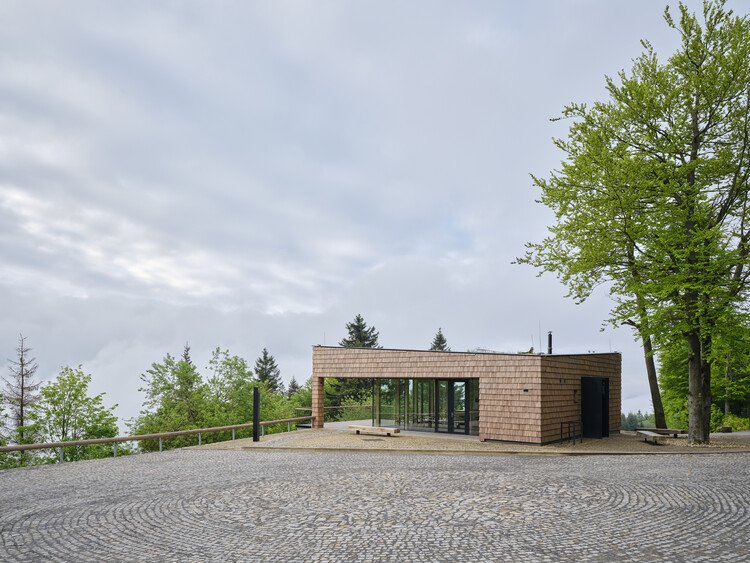
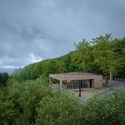
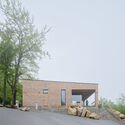
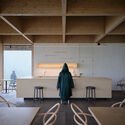
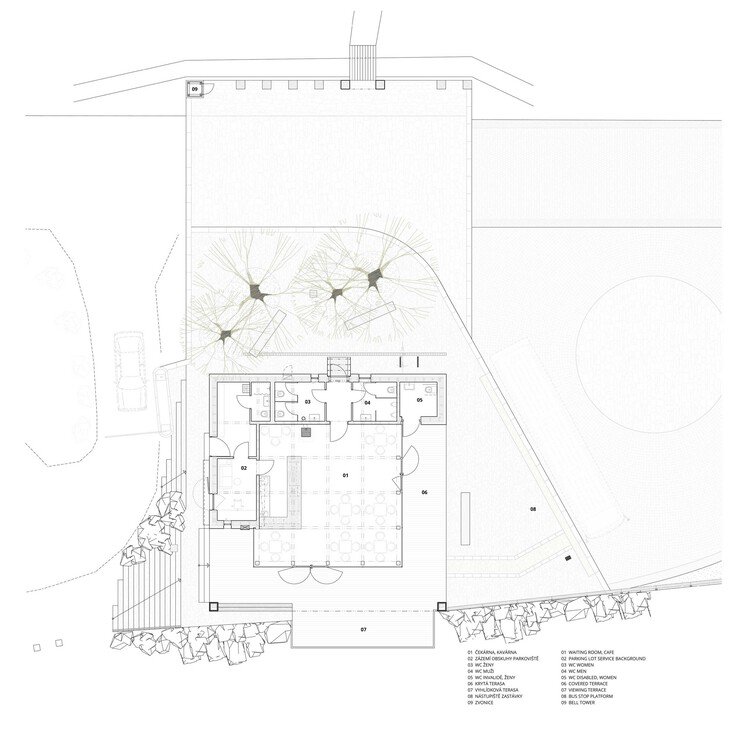

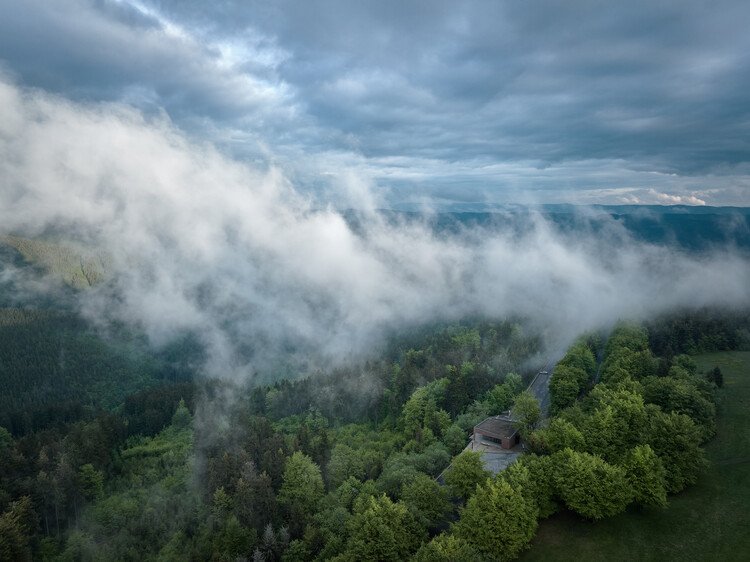
Text description provided by the architects. Location – Pustevny is a significant mountain point and tourist attraction in the Beskydy Mountains range, offering a wide range of tourist, sporting and recreational activities. Since the late 19th century, the area has been progressively urbanized due to the increase in tourism. Architecturally significant buildings have emerged on the saddle, such as shelters designed by Dušan Jurkovič and the cable car terminal by Kamil Mrva, displaying contemporary architectural approaches. The site is easily accessible from the north by cable car from Trojanovice or by car or bus from the south via the Prostřední Bečva road, making it a popular destination. The original secluded character of the saddle, once home to hermitages (in Czech “poustevníci”, hence the name Pustevny) isolated from the outside world, has transformed into a busy area frequently visited by less experienced tourists interested in Pustevny’s architectural heritage.
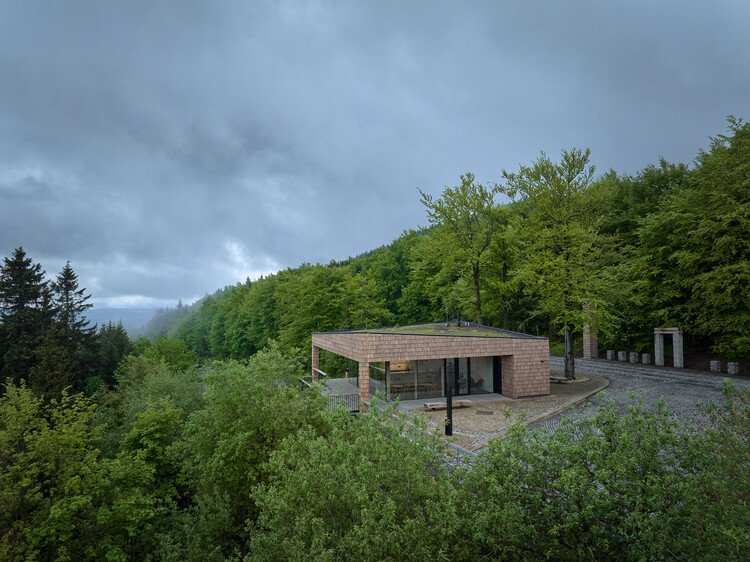

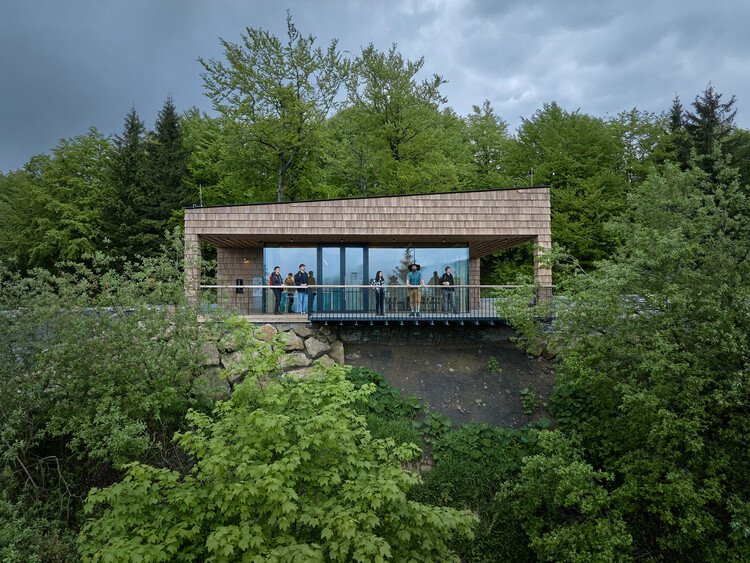
The excessively increasing car traffic, often in conflict with pedestrian tourists on Pustevny Saddle, has led to the need to address the situation. The aim of reducing traffic congestion has led to the relocation of the original bus stop from the saddle to the parking lot. The project includes a new bus stop and turnaround for local buses. The project focuses on the entry point from Prostřední Bečva, where a large parking lot is situated along the access road. The parking lot includes an area on an embankment created during the construction of the road. Previously, a small service building for the parking lot staff stood here. Together with the cable car building on the north side, this location is a significant entry point for visitors to Pustevny.
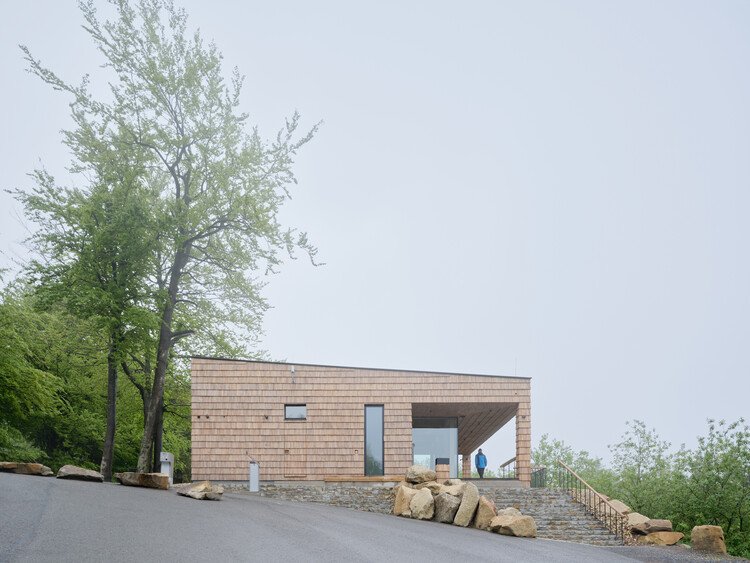
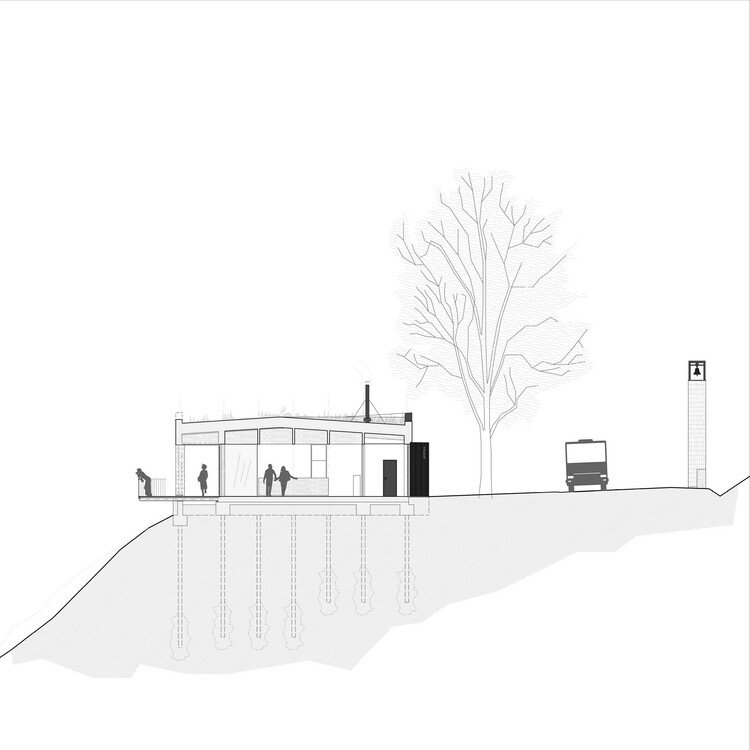
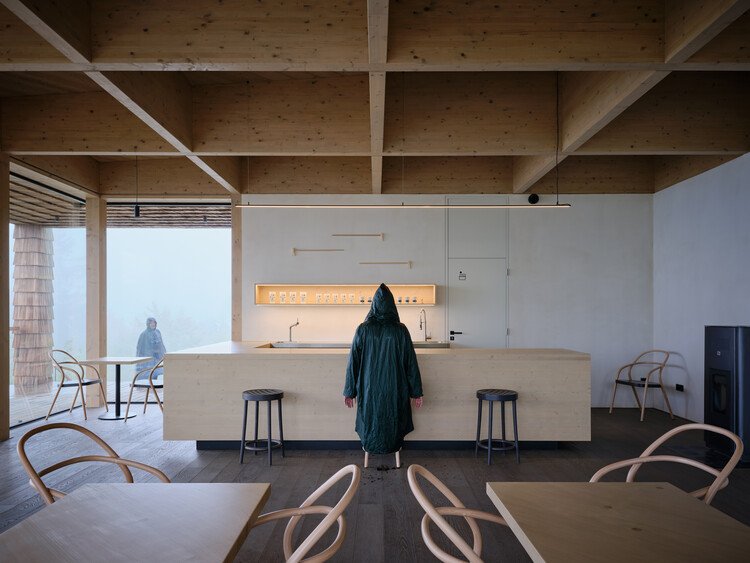

Design – The proposed layout spreads out on both sides of the access road to the saddle. On one side, the main building — “the house” — adjoins the parking lot and the bus stop with a turnaround, serving as their installation and enrichment. On the other side, there is a new bell tower and the gateway to a forest trail connecting to the route leading to the Radhošť summit. The bell tower symbolizes the human presence in the landscape and embodies a spiritual dimension, summarizing the historical and contemporary relationship between people and this place. It also symbolizes the anchoring of the created place in the landscape. The paved area between the bell tower and the house offers seating under mature beech trees. The entrance building integrates a small information center with a waiting room-café, facilities for parking attendants, a bus shelter, toilets and a terrace overlooking the landscape. It is situated on the edge of a hillside, opening out onto a view of Čertův mlýn (Devil’s Mill). The central square interior space of the waiting room and info-café is half delimited by a covered terrace and half by the solid mass of the interior layout of the auxiliary rooms. The bus turnaround is adjacent to the building, which automatically forms a shelter for the bus stop, allowing waiting inside during bad weather. The terrace with a gazebo forms an interconnected whole with the interior, suitable for seating in the summer months.
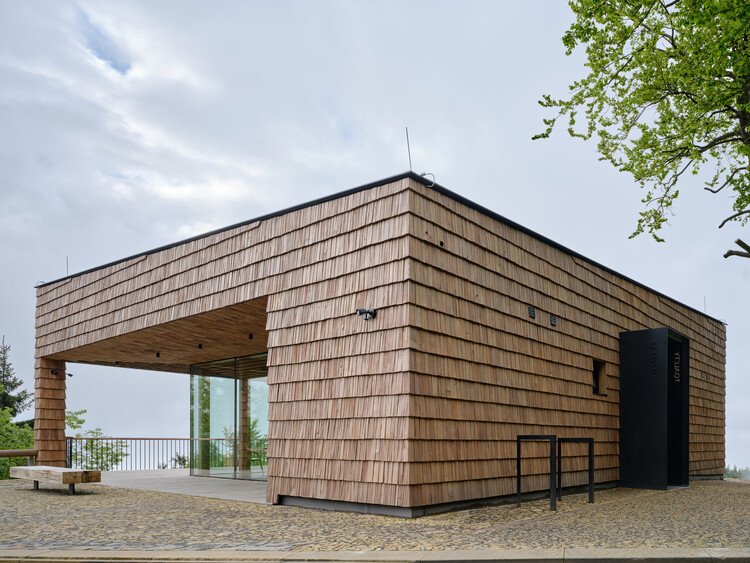
The house is built on micropiles as a timber frame structure with a frame construction and a roof made of glued laminated timber beams forming a pitched roof with a diagonal ridge. The tiled façade recalls traditional local building techniques, and the green roof with local mountain flora blends in with the surrounding meadows. Sandstone paving and walls reveal the core of the Beskydy stone mound. The proposed timber building on one side, the vertical prominence of the bell tower on the other side, the stone paved carpet between them and the existing mature beech trees growing from the hardstand form a clear landscape point. This place marks an entrance to a significant site, like an imaginary portal to Pustevny.

Context | Transport and Municipal Development – Reducing the intensity of individual car traffic is one of the goals for the wider area. The municipality strongly supports public transport as an alternative, and its current increase in intensity is significant. Along with the construction of new cycle paths, the municipality is working on the renovation and protection of individual bus stops throughout its territory. The Pustevny Gateway project and subsequent modifications of other bus stops in the municipality are part of the effort to cultivate and make public transport more attractive. These stops are designed as part of a unified architectural concept in connection with the new station in Pustevny. Through these efforts, the municipality continues to shape its contemporary architectural expression. Over the past decade, the municipality has focused on improving and constructing public spaces and structures with an emphasis on architectural quality. These projects include the new village square, the revitalization of the village center, the Kněhyně playground, and the extension of the primary school. Following the realization of Pustevny Gateway, a project for cultivating other public spaces in Pustevny is being prepared.
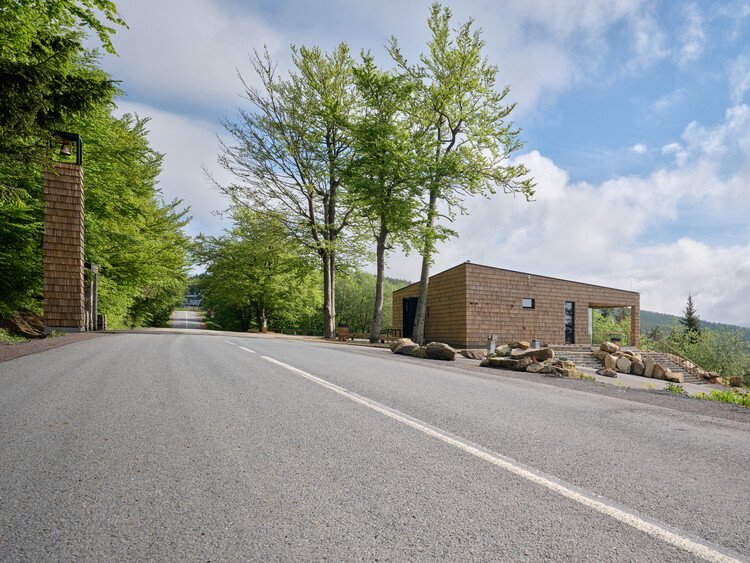
#Gateway #Center #Hermitages #henkai #architects